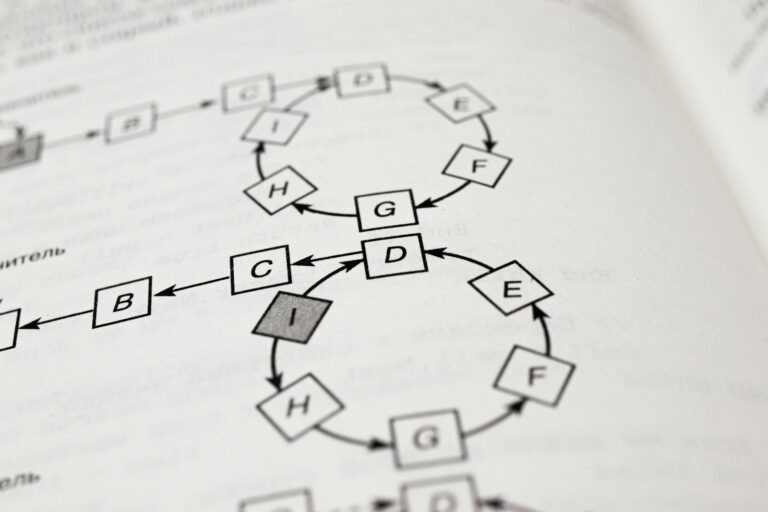Data Structures are the backbone of efficient program execution. Whether you’re building a simple application or solving complex algorithmic challenges, data structures offer a systematic way to organize, manage, and store data for optimal processing. This chapter provides a comprehensive introduction to data structures, aligned with B.Tech/BCA 2025 curriculum, and optimized for students preparing for exams. It is a vital part of “Engineering Study Material,” and this blog post serves as a complete chapter with embedded questions, answers, and diagram suggestions.
Definition: A data structure is a way of organizing and storing data in a computer so that it can be accessed and modified efficiently.
Data structures are fundamental components in computer science, providing systematic methods for organizing and managing data to facilitate efficient processing and retrieval. This chapter offers a comprehensive introduction to data structures, tailored for B.Tech and BCA students, encompassing definitions, classifications, operations, and applications. The content aligns with the 2025 curriculum and is optimized for academic use.
Definition of Data Structures
A data structure is a specialized format for organizing, processing, retrieving, and storing data. It enables efficient access and modification of data. In essence, data structures are foundational to designing efficient algorithms and software systems.
Importance of Data Structures
Data structures play a pivotal role in computer science for several reasons:
- Efficient Data Management: They provide mechanisms to store and retrieve data efficiently, which is crucial for performance optimization.
- Reusability: Well-defined data structures can be reused across different programs and applications, promoting modularity and reducing redundancy.
- Abstraction: They offer a level of abstraction that allows programmers to handle complex data operations without delving into low-level details.
- Scalability: Proper use of data structures ensures that applications can scale effectively to handle larger datasets and more complex operations.
Classification of Data Structures
Data structures can be broadly categorized into:
- Primitive Data Structures:
- These are basic structures provided by programming languages as fundamental building blocks. Examples include integers, floats, characters, and pointers.
- Non-Primitive Data Structures:
- These are more complex structures derived from primitive data structures. They are further divided into:
- Linear Data Structures:
- Elements are arranged sequentially, and each element is connected to its previous and next element. Examples include:
- Arrays: A collection of elements identified by index or key.
- Linked Lists: A series of connected nodes, where each node contains data and a reference to the next node.
- Stacks: A collection that follows the Last In First Out (LIFO) principle.
- Queues: A collection that follows the First In First Out (FIFO) principle.
- Elements are arranged sequentially, and each element is connected to its previous and next element. Examples include:
- Non-Linear Data Structures:
- Elements are not arranged in a sequential manner. Examples include:
- Trees: Hierarchical structures with a root element and sub-elements forming branches.
- Graphs: A set of nodes connected by edges, representing relationships between pairs of objects.
- Elements are not arranged in a sequential manner. Examples include:
Arrays
An array is a collection of elements, each identified by an index or key. They are stored in contiguous memory locations.
Syntax (in C):
cCopyEditint arr[10];
Advantages:
- Quick access to elements using indices.
- Efficient use of memory for storing a fixed number of elements.
Disadvantages:
- Fixed size; resizing requires creating a new array.
- Insertion and deletion operations can be costly as they may require shifting elements.
Applications:
- Used in situations where the number of elements is known and fixed.KGPTC+8B.C.A study+8Studocu+8
- Commonly employed in implementing other data structures like stacks and queues.
Linked Lists
A linked list is a linear data structure where each element, called a node, contains data and a reference (or link) to the next node in the sequence.
Types:
- Singly Linked List: Each node points to the next node.
- Doubly Linked List: Each node has references to both the next and previous nodes.
- Circular Linked List: The last node points back to the first node, forming a circle.
Advantages:
- Dynamic size; can easily grow or shrink in size by allocating or deallocating memory as needed.
- Efficient insertion and deletion operations, especially at the beginning of the list.
Disadvantages:
- No efficient direct access to elements; traversal is required.
- Extra memory is required for storing references.
Applications:
- Useful in applications where frequent insertion and deletion operations are required.
- Employed in implementing other data structures like stacks, queues, and graphs.
Stacks
A stack is a linear data structure that follows the Last In First Out (LIFO) principle, where the last element added is the first to be removed.
Basic Operations:
- Push: Add an element to the top of the stack.
- Pop: Remove the top element from the stack.
- Peek/Top: View the top element without removing it.
Applications:
- Expression Evaluation: Used in evaluating arithmetic expressions and syntax parsing.Chetana Hegde+9KGPTC+9www.slideshare.net+9
- Backtracking Algorithms: Utilized in algorithms like maze solving, where the path can be retraced.
- Function Call Management: Manages function calls in programming languages, maintaining the order of execution.
Queues
A queue is a linear data structure that follows the First In First Out (FIFO) principle, where the first element added is the first to be removed.
Types:
- Simple Queue: Elements are added at the rear and removed from the front.
- Circular Queue: The last position is connected to the first, forming a circle.
mportance of Data Structures
- Efficient data storage and retrieval
- Better performance of algorithms
- Easier data manipulation
- Scalability in real-world applications
Modern programming languages and technologies rely heavily on robust data structures. For example, compilers use stacks and queues, while search engines use trees and graphs.
Classification of Data Structures
1. Primitive Data Structures:
- Integer
- Float
- Character
- Boolean
2. Non-Primitive Data Structures:
- Linear Data Structures
- Arrays
- Linked Lists
- Stacks
- Queues
- Non-Linear Data Structures
- Trees
- Graphs
Comparison Table:
| Type | Linear | Non-Linear |
|---|---|---|
| Structure | Sequential | Hierarchical |
| Example | Array, Stack | Tree, Graph |
| Traversal | One level at a time | Multiple levels possible |
| Memory Use | Efficient in simple apps | Suited for complex structures |
Arrays
An array is a collection of elements stored in contiguous memory locations, with each element accessed by an index.
Syntax (C-like):
int arr[10];Advantages:
- Fast access via index
- Easy to implement
Disadvantages:
- Fixed size
- Insertion/deletion is expensive
Diagram Suggestion: One-dimensional array with index labels
Linked List
A linked list is a linear data structure where each element (node) contains data and a reference (link) to the next node.
Types:
- Singly Linked List
- Doubly Linked List
- Circular Linked List
Diagram Suggestion: Singly linked list showing nodes and pointers
Stack
A stack is a linear data structure that follows the LIFO (Last In First Out) principle.
Operations:
- Push
- Pop
- Peek
Applications:
- Expression evaluation
- Backtracking algorithms
Diagram Suggestion: Stack growing vertically with push/pop operations
Queue
A queue is a linear data structure that follows the FIFO (First In First Out) principle.
Types:
- Simple Queue
- Circular Queue
- Priority Queue
- Double-ended Queue (Deque)
Operations:
- Enqueue
- Dequeue
Applications:
- CPU scheduling
- Print queue management
Trees
A tree is a non-linear data structure consisting of nodes with hierarchical relationships.
Terminologies:
- Root
- Child
- Parent
- Leaf
- Height
- Depth
Types of Trees:
- Binary Tree
- Binary Search Tree
- AVL Tree
- Heap
Applications:
- Hierarchical database representation
- Compiler syntax trees
Diagram Suggestion: Binary Tree with root and child nodes
Graphs
A graph is a non-linear data structure consisting of vertices and edges.
Types of Graphs:
- Directed
- Undirected
- Weighted
- Unweighted
Representations:
- Adjacency Matrix
- Adjacency List
Applications:
- Network routing
- Social network analysis
Diagram Suggestion: Directed graph with labeled nodes and arrows
Abstract Data Types (ADTs)
An ADT defines a data structure from the point of view of its behavior rather than its implementation.
Examples:
- List ADT
- Stack ADT
- Queue ADT
Time and Space Complexity
Time Complexity refers to how the computation time increases with input size.
Space Complexity is the amount of memory required to execute the algorithm.
Common Time Complexities:
- Constant: O(1)
- Linear: O(n)
- Logarithmic: O(log n)
- Quadratic: O(n^2)
Important Formula:
- Big O Notation: Denotes the upper bound performance of an algorithm.
Short Answer Questions (2-3 Marks)
Q1. Define data structure. Ans: A data structure is a specialized way of organizing and storing data to perform operations efficiently.
Q2. What is the difference between linear and non-linear data structures? Ans: Linear structures like arrays and stacks store data sequentially, while non-linear structures like trees and graphs store data hierarchically.
Q3. Name two applications of a stack. Ans: Expression evaluation and recursion tracking.
Q4. What is a circular queue? Ans: A circular queue connects the last position back to the first, forming a circle, to utilize memory more efficiently.
Q5. What is an adjacency matrix? Ans: It’s a 2D array used to represent a graph where each cell indicates whether a pair of vertices are connected.
Long Answer Questions (5-10 Marks)
Q1. Explain different types of data structures with examples. Ans: Data structures are broadly categorized into primitive and non-primitive types. Primitive types include int, float, etc. Non-primitive structures include linear (arrays, stacks) and non-linear (trees, graphs). Arrays provide indexed storage, while linked lists offer dynamic memory usage. Stacks and queues manage order-specific data processing. Trees represent hierarchical relationships, and graphs model networks.
Q2. Describe stack operations with examples and applications. Ans: Stack operations include push (insert), pop (delete), and peek (view top). Example: For an expression evaluator, each operand is pushed onto the stack. When an operator is encountered, operands are popped, operated on, and the result is pushed back. Applications include function call management, undo operations, and syntax parsing.
Q3. What are the differences between arrays and linked lists? Ans: Arrays have a fixed size and allow direct access via indices, making them faster for random access. Linked lists are dynamic and allow efficient insertion/deletion, but accessing elements is sequential. Arrays waste memory when resized; linked lists use memory efficiently.
Q4. Discuss tree terminologies and types. Ans: Tree terminologies include root (starting node), leaf (no child), child/parent, and levels. Types include binary trees, where each node has at most two children; binary search trees (sorted structure); AVL trees (balanced BST); and heaps (complete trees for priority queues).
Q5. Explain graph representations and their applications. Ans: Graphs can be represented via adjacency matrices (2D arrays) or adjacency lists (linked structures). Matrices are memory-intensive but allow quick lookups. Lists are memory-efficient. Applications include Google Maps (shortest path), Facebook (social graphs), and routing algorithms.
Chapter Summary
- Data structures are essential for efficient data manipulation.
- Classified into primitive and non-primitive types.
- Arrays, stacks, and queues are linear data structures.
- Trees and graphs are non-linear structures.
- ADTs describe behavior, not implementation.
- Time/space complexity affects performance.
- Different structures suit different applications.
Sample Internal Questions / Model Paper Questions
- Define abstract data type. Give two examples.
- Compare stack and queue with suitable applications.
- Write and explain the operations of a singly linked list.
- Differentiate between tree and graph.
- Explain the concept of time complexity with examples.
- Illustrate the working of circular queue with a diagram.
- Describe the applications of binary trees.
- Represent a graph using adjacency list and matrix.
- Write the real-life applications of data structures in computer science.
- Discuss the advantages of using linked lists over arrays.
Click below to download this chapter as PDF
Suggested PDF File Name: Unit-1-Introduction-to-Data-Structures-BTech-BCA-Notes-2025.pdf
For more Engineering Study Material, B.Tech Data Structures Notes 2025, and Unit 1 Notes for BCA students, stay connected. Free Download PDF available after every chapter update.



